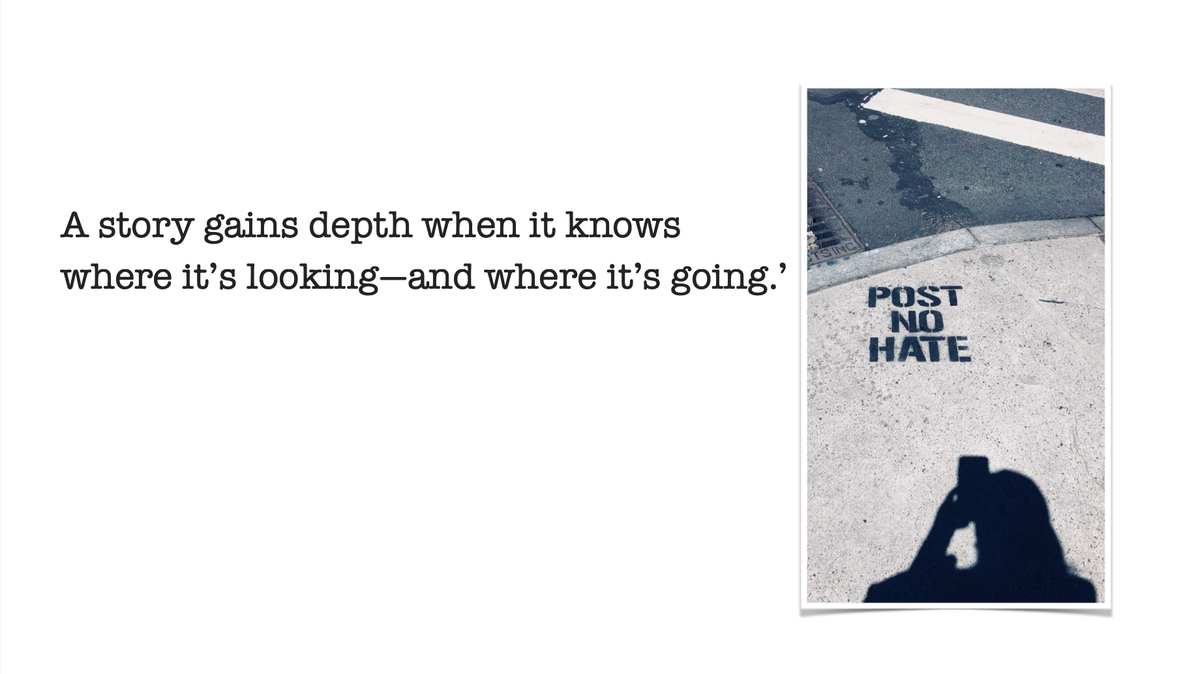What Makes a Strong Story?

The feature segments I've produced over the years—nonfiction stories created for television—live somewhere between news and documentary. They follow facts but with a purpose beyond reporting: to uncover something deeper—whether it's a societal shift, a cultural undercurrent, or a subtle question about where we are and where we're going.
When producing these types of stories, one of my first checkpoints is: can I find "depth" in this subject?
News connects facts. Features expand them—with perspective, context, and, often, emotional weight. I always ask myself: Where does this story begin, and where is it going? If I can't see at least a faint direction after some initial digging, in my experience, it usually doesn't work out.
In our daily lives, plenty of interesting facts don't lead anywhere. Let's say, for example, a new "Glow-in-the-Dark Spicy Waffles" goes viral on Instagram. It's unique and looks great, and the ingredients or the baking method might be worth noting. But if it only exists to please trend-hunters, then maybe it's news—but it's not a story.
About eight years ago, I produced a piece on a farmer's market that had reopened beside the Oculus at the World Trade Center. This same market had been operating on the morning of 9/11, and over a decade later, it returned to that location. That starting point alone was compelling. Some of the farmers who had been there on that day came back. Others were new vendors. One of the most popular stalls sold gluten-free pastries.
At first, I thought the gluten-free angle wasn't that unique anymore. But as I spoke with the owner, Deborah, I learned that she had quit her corporate job to start the business for her husband, who has a gluten-related illness. That gave the story some shape—but it didn't stop there.
It came up during a casual chat—Deborah said she wanted to open a stall at the market, but not emotionally. "I wasn't sure I could handle it," she said. At the time, neither of us knew this would become the heart of the story. But something about that line stayed with me, so I asked more questions and eventually learned that her former office was across the street from the Twin Towers, and she had lost colleagues and friends that day. Since 9/11, she hadn't been able to return to the area.
Opening her stall at the market wasn't just about sharing the joy of food—it was her way of transforming a place marked by sorrow into one filled with warmth and connection. By standing there, serving pastries she baked herself, she was quietly reclaiming the space on her own terms. It was her way of saying: I'm still here. Stronger than before.
This is how a story grows—by following your angle until it leads to a landing point. But here's the tricky part: that "landing point" often shifts. Sometimes it must. Deborah's story could've focused on post-9/11 recovery or on career-switching entrepreneurs. But for me, it became about personal resilience. Still, the key was letting the facts shape the depth of the story, not the other way around. If your landing point isn't flexible, you risk losing sight of what the facts tell you.
I often find myself drawn to stories where something emotional—something human—is quietly revealed. Even if it's subtle or small, if I can touch on a person's inner world, there's almost always something worth sharing.
